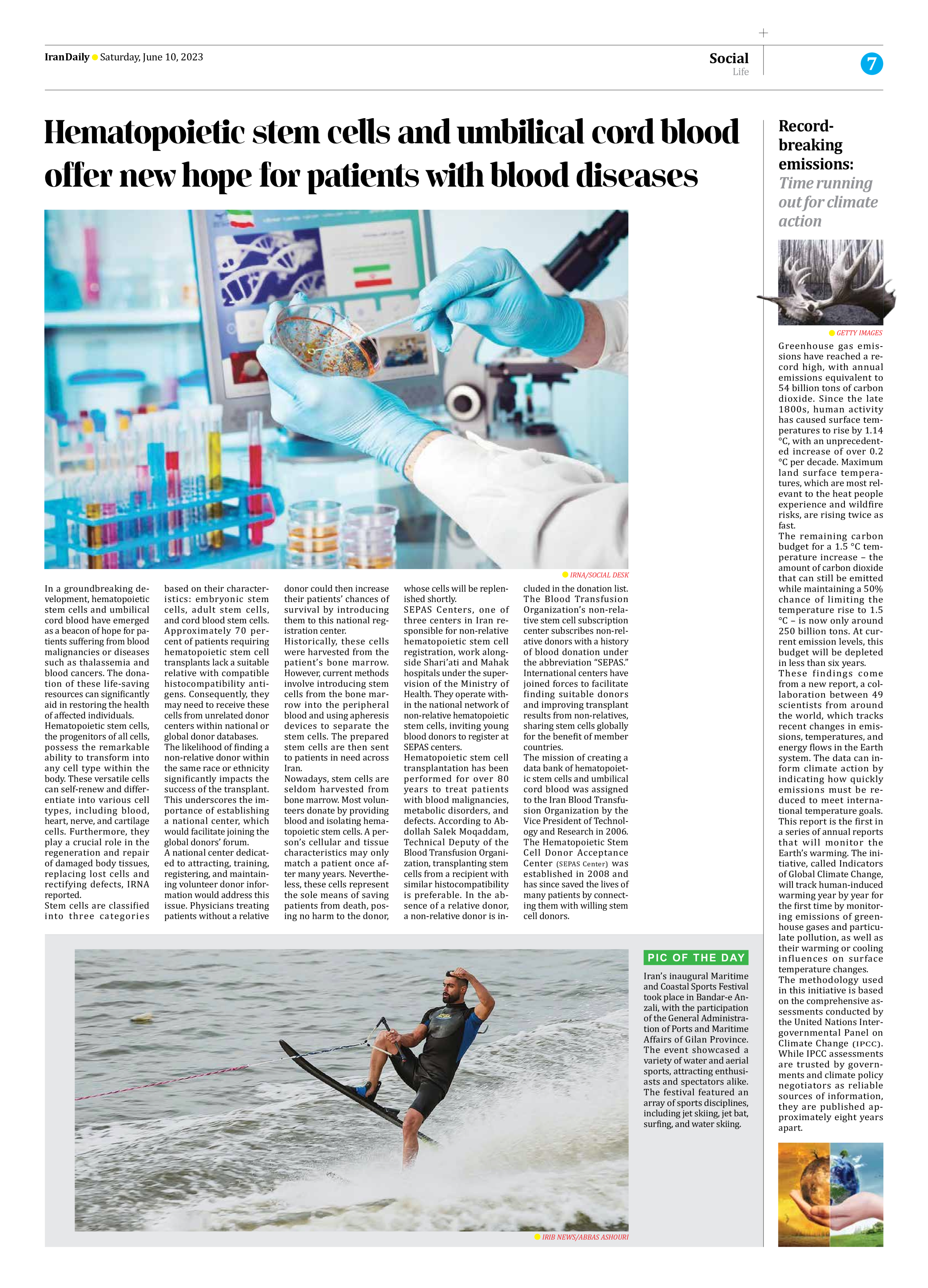
Hematopoietic stem cells and umbilical cord blood offer new hope for patients with blood diseases
In a groundbreaking development, hematopoietic stem cells and umbilical cord blood have emerged as a beacon of hope for patients suffering from blood malignancies or diseases such as thalassemia and blood cancers. The donation of these life-saving resources can significantly aid in restoring the health of affected individuals.
Hematopoietic stem cells, the progenitors of all cells, possess the remarkable ability to transform into any cell type within the body. These versatile cells can self-renew and differentiate into various cell types, including blood, heart, nerve, and cartilage cells. Furthermore, they play a crucial role in the regeneration and repair of damaged body tissues, replacing lost cells and rectifying defects, IRNA reported.
Stem cells are classified into three categories based on their characteristics: embryonic stem cells, adult stem cells, and cord blood stem cells. Approximately 70 percent of patients requiring hematopoietic stem cell transplants lack a suitable relative with compatible histocompatibility antigens. Consequently, they may need to receive these cells from unrelated donor centers within national or global donor databases.
The likelihood of finding a non-relative donor within the same race or ethnicity significantly impacts the success of the transplant. This underscores the importance of establishing a national center, which would facilitate joining the global donors’ forum.
A national center dedicated to attracting, training, registering, and maintaining volunteer donor information would address this issue. Physicians treating patients without a relative donor could then increase their patients’ chances of survival by introducing them to this national registration center.
Historically, these cells were harvested from the patient’s bone marrow. However, current methods involve introducing stem cells from the bone marrow into the peripheral blood and using apheresis devices to separate the stem cells. The prepared stem cells are then sent to patients in need across Iran.
Nowadays, stem cells are seldom harvested from bone marrow. Most volunteers donate by providing blood and isolating hematopoietic stem cells. A person’s cellular and tissue characteristics may only match a patient once after many years. Nevertheless, these cells represent the sole means of saving patients from death, posing no harm to the donor, whose cells will be replenished shortly.
SEPAS Centers, one of three centers in Iran responsible for non-relative hematopoietic stem cell registration, work alongside Shari’ati and Mahak hospitals under the supervision of the Ministry of Health. They operate within the national network of non-relative hematopoietic stem cells, inviting young blood donors to register at SEPAS centers.
Hematopoietic stem cell transplantation has been performed for over 80 years to treat patients with blood malignancies, metabolic disorders, and defects. According to Abdollah Salek Moqaddam, Technical Deputy of the Blood Transfusion Organization, transplanting stem cells from a recipient with similar histocompatibility is preferable. In the absence of a relative donor, a non-relative donor is included in the donation list.
The Blood Transfusion Organization’s non-relative stem cell subscription center subscribes non-relative donors with a history of blood donation under the abbreviation “SEPAS.” International centers have joined forces to facilitate finding suitable donors and improving transplant results from non-relatives, sharing stem cells globally for the benefit of member countries.
The mission of creating a data bank of hematopoietic stem cells and umbilical cord blood was assigned to the Iran Blood Transfusion Organization by the Vice President of Technology and Research in 2006. The Hematopoietic Stem Cell Donor Acceptance Center (SEPAS Center) was established in 2008 and has since saved the lives of many patients by connecting them with willing stem cell donors.







